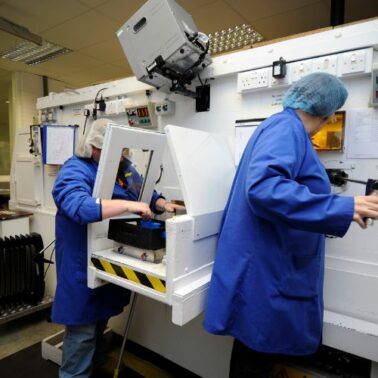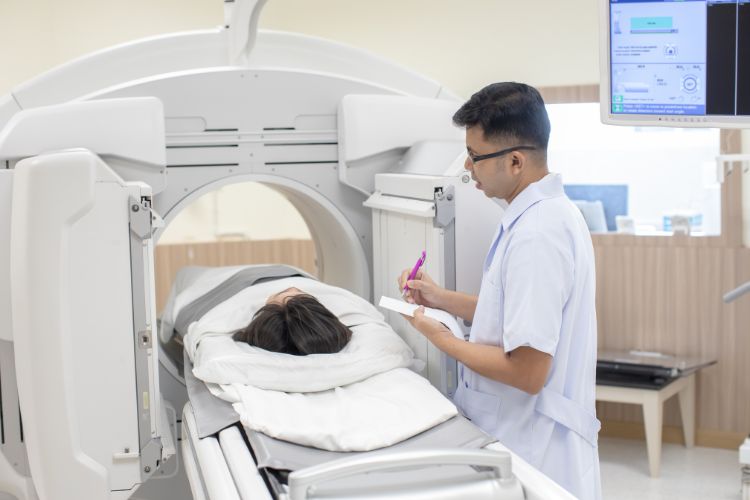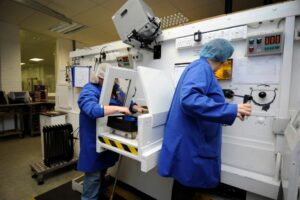
A Deep Dive into How Nuclear Medicine Works
Nuclear medicine is a revolutionary blend of groundbreaking science and medical practice. It’s transformed how we diagnose and treat a range of conditions.
This innovative field uses radiopharmaceuticals — radioactive substances in safe, small doses — to explore the inner workings of the body in ways previously impossible.
Nuclear medicine gives healthcare providers unparalleled insights into the body’s function and structure by targeting specific organs, bones, or tissues. It allows the early detection of diseases like cancer, heart conditions, and other abnormalities.
The Science Behind the Scan:
Wondering how it works? Want to know how safe it really is? You’re in luck! In this article, we’ll dive deep into the world of nuclear medicine, giving you all of the need-to-know information.
Understanding the Basics of Nuclear Medicine

Nuclear medicine is a fascinating branch of medical imaging that goes beyond the capabilities of traditional imaging methods, offering healthcare professionals a deeper look into the body’s internal processes.
It uses a unique combination of chemistry, physics, and medicine to diagnose and treat diseases. How? By using small amounts of radioactive materials, known as radiopharmaceuticals.
Unique Approach
Unlike X-rays and CT scans that show how things look inside the body, nuclear medicine tests reveal more about how the body functions.
By introducing radiopharmaceuticals into the body, doctors can observe the behaviour of these substances in specific organs, detecting abnormalities at a cellular level.
Brief History
The journey of nuclear medicine first began in the early 20th century, but it wasn’t until the mid-1950s that it truly gained momentum with the introduction of the gamma camera. This invention allowed for dynamic imaging of a variety of organs, marking the start of nuclear medicine as we know it today.
Over the decades, advancements in technology and radiopharmaceuticals have made nuclear medicine an invaluable tool in the fight against disease.
Nuclear medicine’s unique ability to pinpoint early signs of disease before they’re visible on other imaging tests makes it a critical part of modern healthcare.
While some patients find the idea of any radiation to be stressful and potentially dangerous, there are little to no side effects of nuclear medicine scans. It’s as safe as it is effective!
Radiopharmaceuticals: The Heart of Nuclear Medicine

Image Source: Wikimedia
Radiopharmaceuticals are the cornerstone of nuclear medicine, offering a unique glimpse into your body’s hidden functions.
These special compounds with radioactive materials are key to both diagnosing and treating a range of diseases.
How They Work
When administered to a patient, radiopharmaceuticals target specific organs, tissues, or bones.
As they decay, they emit gamma rays, which are captured by a gamma camera to create detailed images or deliver targeted therapy to diseased cells, like in cancer treatment.
The Science Behind It
Radiopharmaceuticals involve attaching a radioactive isotope to a molecule that naturally pools in the area of interest within the body.
When introduced to the body, these compounds can provide valuable information about organ function or directly attack disease at the cellular level, minimising harm to healthy tissues.
Imaging Techniques in Nuclear Medicine
Nuclear medicine uses a variety of imaging techniques to visualise the body’s internal functions, each offering a window into the workings of organs and tissues.
Among these, PET and SPECT scans stand out for their detailed imaging capabilities.
PET Scans (Positron Emission Tomography)
PET scans use radiopharmaceuticals to produce 3D images, highlighting areas of high metabolic activity and cellular function.
This is particularly useful for identifying cancer, as cancerous cells have higher metabolism rates than normal cells.
SPECT Scans (Single Photon Emission Computed Tomography)
Similar to PET, SPECT scans provide detailed images, but they use a different type of radioactive tracer that emits gamma radiation.
This technique is often used for detailed views of the brain, heart, and bones, allowing doctors to assess blood flow and identify any abnormalities.
Nuclear Medicine in Diagnosis and Treatment
Nuclear medicine plays a crucial role in both the diagnosis and treatment of a wide range of diseases, offering a non-invasive yet incredibly insightful peek into the body’s functions.
From identifying cancer to uncovering heart and neurological disorders, this technology has become an indispensable tool in modern healthcare.
Diagnosis
Nuclear medicine techniques like PET and SPECT scans are invaluable in detecting diseases at their earliest stages.
For cancer, these scans can locate tumours and metastases. In heart disease, they assess blood flow and heart function. For neurological disorders, they reveal any abnormalities in brain activity.
Treatment
Beyond diagnosis, nuclear medicine is instrumental in targeted radionuclide therapy, which delivers therapeutic doses of radioactive materials directly to tumour sites, minimising damage to healthy tissues.
This approach is particularly effective in treating thyroid cancer and certain types of bone cancer, as well as in relieving pain from bone metastases.
Safety and Effectiveness of Nuclear Medicine
While nuclear medicine is incredibly beneficial, patients are often concerned about radiation exposure. Fortunately, the safety and effectiveness of these procedures are well-documented. The benefits far outweigh any risks. Let’s dig deeper:
Radiation Concerns
It’s natural to worry about radiation, but nuclear medicine uses minimal amounts tailored to each patient’s specific needs.
The techniques are designed to ensure exposure is as low as reasonably possible, prioritising patient safety without compromising diagnostic accuracy.
Safety and Effectiveness
Studies and clinical practice have consistently shown that nuclear medicine procedures are safe, with adverse reactions being extremely rare.
Plus, current innovations in nuclear medicine are allowing technologists to use even lower doses, meaning the procedure is getting safer and safer over time.
The Future of Nuclear Medicine
Nuclear medicine has already made a significant impact on healthcare, improving the diagnosis and treatment of countless conditions.
As we look to the future, its potential for further advancements promises even greater contributions to medical science and patient care.
Continuing Impact
The precision of nuclear medicine imaging in visualising tissue activity and detecting diseases at their earliest stages has been revolutionary, particularly in managing different cancers.
By providing clear images and accurate results, nuclear medicine aids us in tailoring treatments to individual patient needs.
Future Developments
Ongoing research is focused on refining the process of creating and using radiopharmaceuticals to reduce the amount of radiation exposure, all while enhancing the quality of the pictures produced.
Innovations are also expected to bring more detailed insights into a range of diseases, improving diagnostic accuracy and treatment outcomes.
The future of nuclear medicine looks bright, with potential breakthroughs on the horizon that could redefine how we approach the detection and management of complex conditions.

Discover the Power of Nuclear Medicine
We hope that this article has made it easier to understand the role of nuclear medicine in modern healthcare.
Whether you’re a patient seeking advanced treatment options or you’re simply eager to learn more about the science behind the scans, our website has the resources you need.
For more information on how nuclear medicine can play a part in your healthcare journey or to schedule a consultation of your own, visit PRP Diagnostic Imaging’s nuclear medicine services page or talk to your GP.
